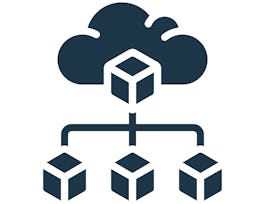Get started with Git and GitHub in this self-paced, introductory course! You’ll become familiar with collaborative version control and popular Git platforms. Collaboration and social coding are crucial parts of contemporary Software Engineering practices and the DevOps culture.


Getting Started with Git and GitHub
This course is part of multiple programs.
Taught in English
Some content may not be translated



Instructors: Rav Ahuja
71,186 already enrolled
Included with 
Course
(884 reviews)
96%
Recommended experience
What you'll learn
Describe version control and its place in social and collaborative coding and in DevOps.
Explain basic Git concepts such as repositories and branches used for distributed version control and social coding.
Create GitHub repositories and branches, and perform pull requests (PRs) and merge operations, to collaborate on a team project.
Build your portfolio by creating and sharing an open-source project on GitHub.
Skills you'll gain
Details to know

Add to your LinkedIn profile
5 quizzes
Course
(884 reviews)
96%
Recommended experience
See how employees at top companies are mastering in-demand skills

Build your subject-matter expertise
- Learn new concepts from industry experts
- Gain a foundational understanding of a subject or tool
- Develop job-relevant skills with hands-on projects
- Earn a shareable career certificate


Earn a career certificate
Add this credential to your LinkedIn profile, resume, or CV
Share it on social media and in your performance review

There are 4 modules in this course
Application developers rarely work alone. Large web/cloud/mobile development and data science projects will include many people – front-end developers, back-end developers, database administrators, repository administrators, and others. Every change by every contributor must be tracked and controlled to enable collaboration, accountability, and version management. This type of distributed version control is extremely important when managing both small and large software projects. In this module, you will learn about some of the popular version control tools, create a GitHub account, and use the GitHub web interface to create a repository, add a file to it, and commit your changes. Branches are the heart of workflows in Git-based version control systems like GitHub. You will also become familiar with creating and using branches and merging your changes to the main branch.
What's included
6 videos2 readings3 quizzes3 plugins
As you start working with GitHub repositories and automating workflows, using the web interface can be limiting and more time-consuming. This is where Git commands come in. You can use it from your own desktop, or a virtual desktop provided through the Cloud IDE - wherever you develop your code. In this module, you will become familiar with and utilize various Git commands to clone and fork repositories, as well as commit, push, and pull your changes using the command line.
What's included
6 videos1 reading2 quizzes2 app items3 plugins
Now that you are familiar working with GitHub repositories, Branches, and Git commands, in this module you will apply your knowledge and skills to create a GitHub Project, add few files to it such as an open-source license, and share it publicly.
What's included
1 video2 readings1 peer review2 app items5 plugins
In this module, you will learn to install Git Bash on your Windows machine and configure an SSH key to work with your GitHub repo using Git commands on your system.
What's included
1 reading4 plugins
Recommended if you're interested in Software Development
Why people choose Coursera for their career




Learner reviews
Showing 3 of 884
884 reviews
- 5 stars
74.85%
- 4 stars
17.73%
- 3 stars
4.71%
- 2 stars
1.01%
- 1 star
1.68%
New to Software Development? Start here.

Open new doors with Coursera Plus
Unlimited access to 7,000+ world-class courses, hands-on projects, and job-ready certificate programs - all included in your subscription
Advance your career with an online degree
Earn a degree from world-class universities - 100% online
Join over 3,400 global companies that choose Coursera for Business
Upskill your employees to excel in the digital economy
Frequently asked questions
Access to lectures and assignments depends on your type of enrollment. If you take a course in audit mode, you will be able to see most course materials for free. To access graded assignments and to earn a Certificate, you will need to purchase the Certificate experience, during or after your audit. If you don't see the audit option:
The course may not offer an audit option. You can try a Free Trial instead, or apply for Financial Aid.
The course may offer 'Full Course, No Certificate' instead. This option lets you see all course materials, submit required assessments, and get a final grade. This also means that you will not be able to purchase a Certificate experience.
When you enroll in the course, you get access to all of the courses in the Certificate, and you earn a certificate when you complete the work. Your electronic Certificate will be added to your Accomplishments page - from there, you can print your Certificate or add it to your LinkedIn profile. If you only want to read and view the course content, you can audit the course for free.
If you subscribed, you get a 7-day free trial during which you can cancel at no penalty. After that, we don’t give refunds, but you can cancel your subscription at any time. See our full refund policy.





